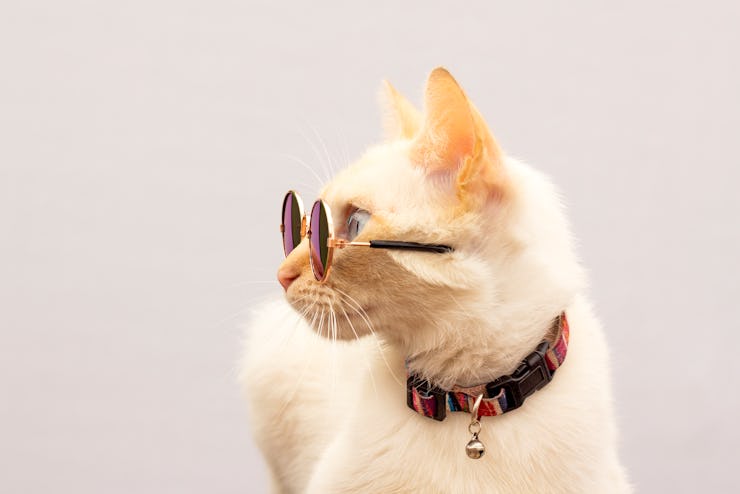Does My Indoor Cat Need A Collar? A Veterinarian Reveals An Unexpected Answer
You don’t need the bells and whistles, but a collar is crucial for your dog or cat.

Modern collars are much more than a loop of fabric with an engraved tag. They boast wi-fi connection and AI capability and might be nicer than your fanciest pair of shoes. But strip back the superfluous parts, collars serve a basic, important function of identifying your fur baby if they ever get out of your sight.
While collars are arguably important for humans, our smooth-brained friends don’t know what they’re wearing or why. Are there potential drawbacks to making our pets wear collars? And do indoor cats need them as much as the most trail-blazing dog? The health effects of collars, unsurprisingly, are far more beneficial than they are detrimental.
Does my pet need a collar?
Yes, says senior veterinarian Carly Fox at Schwarzman Animal Medical Center in New York City. It’s understandable that pet parents worry about how wearing a collar makes their perfect critters feel, as they’re wont to worry about everything, but this doesn’t have to be one of them.
Pet parents might believe that with the prevalence of microchips, their beloved animals don’t need a collar, but Fox says otherwise. “A microchip is not accessible to the average person and needs to be read at a veterinarian’s office or shelter by a special machine,” she writes to Inverse. Anyone can read an ID on a collar on the spot.
In fact, Fox says that animals with no human or collar are less likely to be approached. “Animals who wear collars are typically perceived as being owned,” she writes. This perception makes all the difference. Not only do people who find collared animals know they belong to someone, but they’re also more confident in approaching them since pets are likely friendlier and cleaner than strays. A do-gooder might take a collarless animal to the shelter, but can immediately call the number on its tag to connect with the owner.
Even cat collars are worthwhile. Fox says that if your kitty roams free outdoors, he “absolutely” should wear an identifying collar. She goes a step further: “Your indoor cat should ideally wear a collar as well,” in case they slip out.
What if my pet doesn’t like collars?
It can be hard for some pets to adjust to wearing a collar, but Fox assures that the correct size and material should be comfortable. She emphasizes that “risks to your pet wearing a properly fitting collar are low.” She recommends staying away from chain link, metal, or pronged collars in favor of a soft, lightweight textile with give and padding. Harnesses are also good options for not fully encircling the neck. When you’re keeping an eye on your pet indoors, she also says the collar can come off. “But be sure to replace [it] if your pet goes outside or if you are having people over,” creating the risk of an inadvertently ajar door.
However, if your pet’s collar gets wet, that can pose a risk of skin irritation and bacterial or yeast infections. Fox advises removing the collar, drying it, and putting it back on.
As always, there are exceptions. She stipulates that if your dog has intervertebral disc disease, in which the gel-like core cushioning the space between spinal vertebrae hardens and decreases easy mobility, a collar may exacerbate their pain. A skin disease in the vicinity might also preclude collar use. In these cases, she says consulting your vet is the best way to go.
Collars certainly can be low-tech, just as long as there’s a clear way for them to identify your pet should the worst occur. These accessories don’t need to be fancy to save your pet’s life.